Even if it has been sidelined in oil’s favor, very few media offer the same flexibility and variety of results as egg tempera.
Maybe you’ve noticed how some ancient Medieval and early Renaissance paintings seem to be made of light.
Well, this is due to this extraordinary substance.
Let me tell you why myself and some other contemporary artists, really treasure it.
I’ll show you how easy it is to make egg tempera and the benefits you can expect when painting with it.
Consider this my personal invitation to you to try using tempera and to appreciate its characteristics and its role in creating so many masterpieces over the centuries.
What is Egg Tempera?
Tempera is a handmade painting medium, which is very easy to prepare. It harnesses the natural emulsion of egg yolk, using it as a binder of liquid and dry pigments to create color layers.
The great advantage of using a mixture of normally immiscible substances (water and fat), is that we can use tempera either as a lean or oily medium.
This grants it an amazing versatility.

A Word on Tempera’s History

Tempera was the prima donna of small-scale painting since the classical age until the early 1500s, and it was used way outside of Europe.
Its fate appeared sealed when Flemish painters perfected the use of oil as a painting binder by the middle of the 15th Century AD. At that time, Western civilization was not only riding a renewed interest in Nature as a study subject but also into ever more radical illusionism.
Oil, with its very long drying time lapse and extreme viscosity, was the perfect answer for these cravings.
Thus, while egg yolk remained part of Venetian Masters’ and Rembrandt’s recipes until the first half of the 17th Century, after Velázquez it virtually fell out of use in Western Art.
Luckily enough, tempera was kept alive within the walls of Orthodox monasteries because of theological and aesthetic reasons (Eastern Christianity regards the employment of egg yolk as sacred in the making of religious images because of its life nourishing nature).
The 19th Century, with its ambitions of reviving Medieval and Renaissance glories, had some artists experimenting with tempera again, but it was perhaps Giorgio de Chirico’s work that led to much more vigorous employment of it along the 20th Century.

How Does Egg Tempera Compare to Oil?
Depending on their dilution degree and the recipe we prepare, oil and tempera’s consistency may not be as different as their viscosity.
The most noticeable difference in the definitive results of tempera would be its matt finishing. This can be modified by applying a variety of varnishes.
Being much less malleable than oil, it is all but impossible to achieve the same amount of impasto using tempera, yet we can prepare our painting’s surface with the desired relief.
Once we incorporate the right quantity of pigment, tempera dries almost as fast as acrylic.
This demands a skilled brush and a well-planned strategy when rendering atmospheres or developing chromatic grayscales (the mixture of colors rather than black and white hues), but it also becomes an advantage for bold sensibilities who like working alla prima (first-hand stroke).
On the other hand, tempera is the only easel medium which can be as luminescent as watercolor, therefore it’s a perfect match for those painters who prefer to work through transparency.
It is certainly easier to achieve optical renderings using oil, which is the reason why it took tempera’s place for a start, but an accomplished painter can be just as punctual employing the older medium.
While I wouldn’t call it a beginners’ technique, it is worth mentioning that high-quality tempera is much cheaper than high-quality oil, and also, that the best and oldest oils have at least another 500 years to go before we can call them as durable.
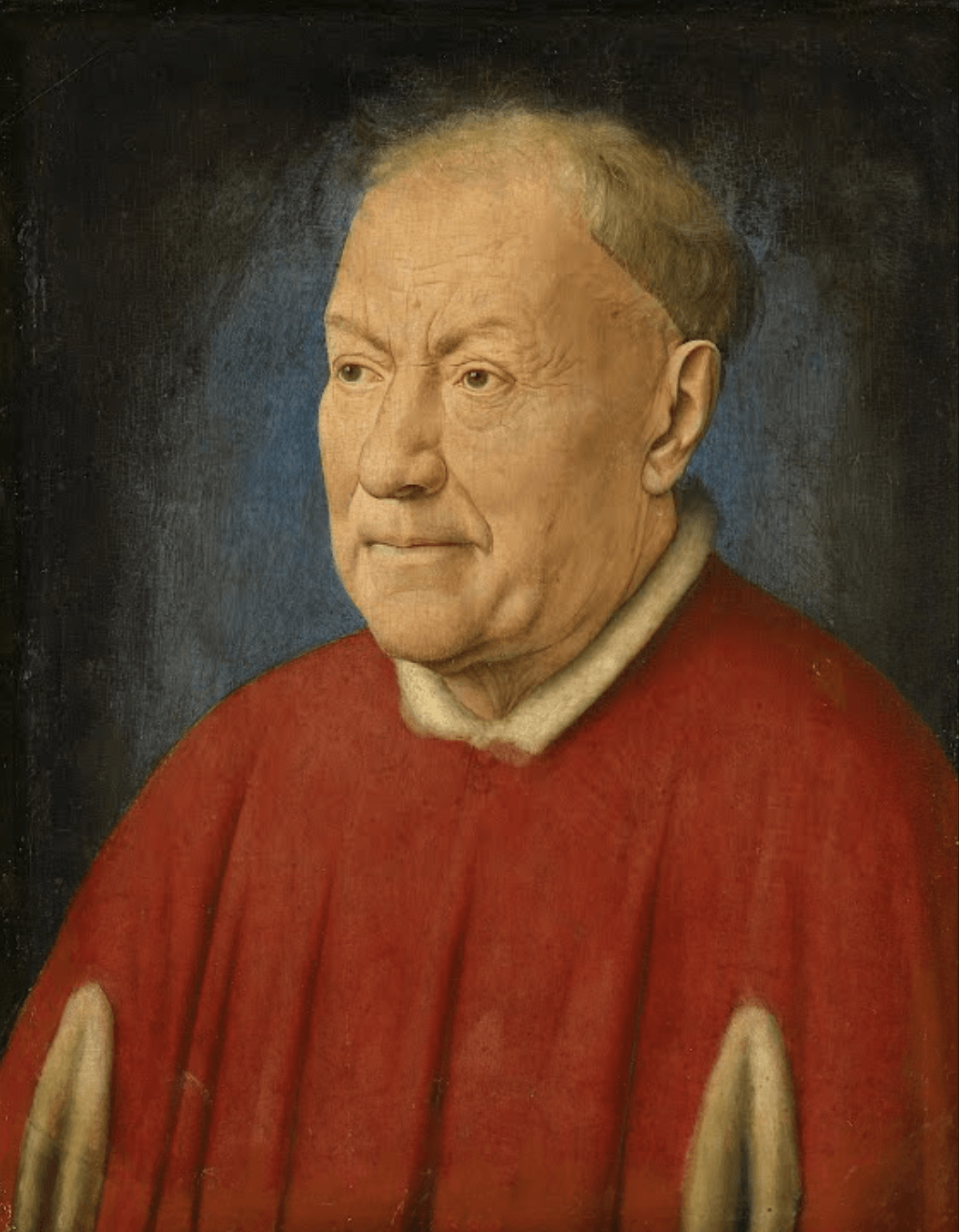
What Supplies Do We Need?
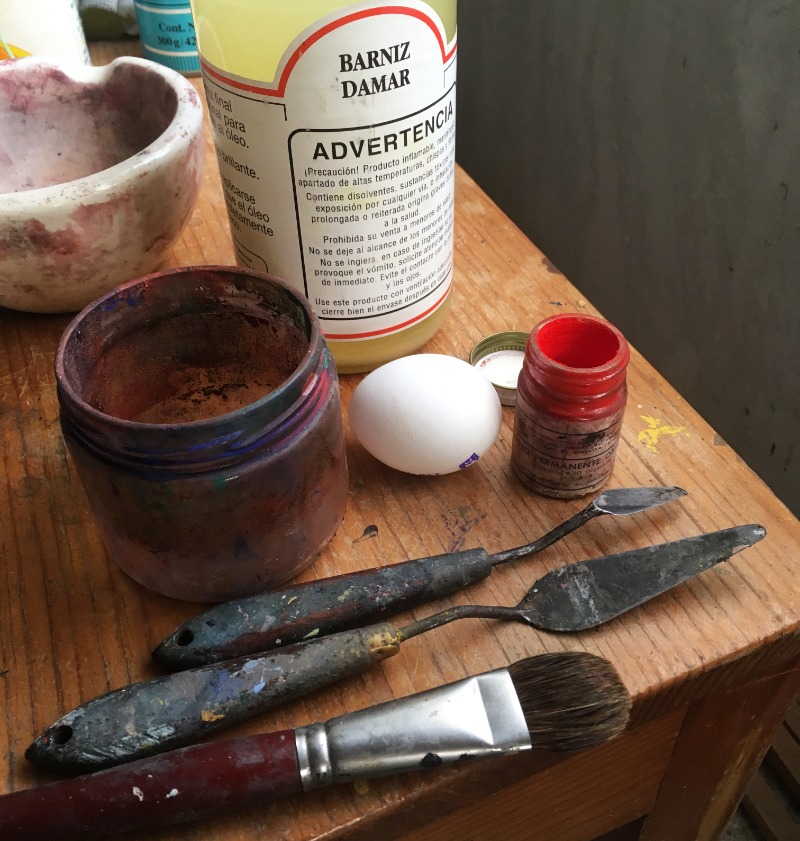
Preparing tempera is not more complicated than preparing pancakes. Here’s a small checklist of everything we’ll need:
- Egg – Some purists prefer white eggs because they seem to perceive a more neutral tone in its yolk. To be honest, I am unable to tell the difference once I add the pigment.
- Water.
- Damar varnish (optional).
- Linseed oil (optional).
- Our favorite powder pigments.
- A pewter or porcelain dish.
- A glass jar of about 100 ml.
- Painting knives – Professional metal knives work better and are easier to clean.
- Soft hair and bristle brushes – The ones you regularly use for oil painting will work fine.
How To Make Egg Tempera
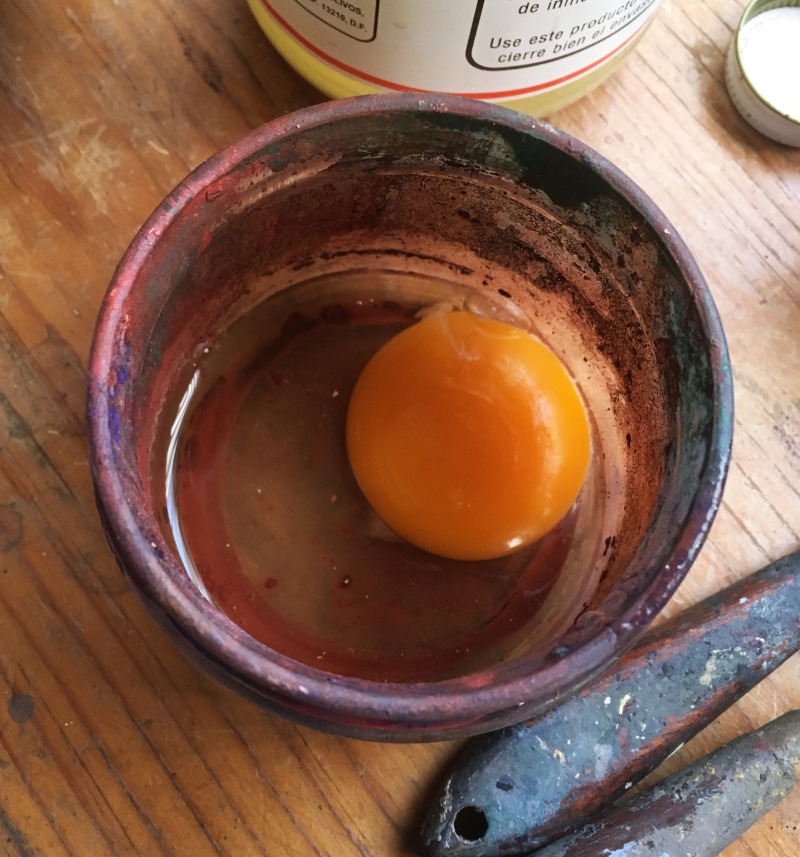
The Purist Way
We break an egg with enough care to preserve the yolk within its membrane, just as we would do when preparing fried eggs (fig. 6).
To separate the yolk from the white, we may use a tissue to absorb the latter. We could also use a very tight sieve, but it’s safer to use our hands with finesse.
Holding it over a clean glass jar, we pierce the yolk with a needle. Pour it into the jar without letting go of the membrane and discard this when there’s nothing left inside.
Add water in equal proportion to the yolk. Stir vigorously with a clean painting knife.
Once we have a homogeneous substance, we may add up to another two parts of water.

If we wish for a more ductile medium, we can add a part of Damar varnish.
For a little more body and flexibility, add one part of linseed oil.
In either case, stir until you get a homogeneous liquid once again.
We can now mix the medium on a pewter dish or a porcelain palette with our preferred pigment until there are no lumps and we are ready to go.
My Way
Break a whole egg into a clean glass jar.
Close the jar tightly and shake it as if you wanted to affront James Bond.
I keep the egg white and add no water because this yields a much heavier medium; we can always add the water later and separately.
I always add a part of Damar expecting to use the medium’s full opacity but also keeping enough versatility to apply transparent layers (fig. 7).
I do add a part of heavily sun-thickened linseed oil when I want brushstroke patterns to be evident.

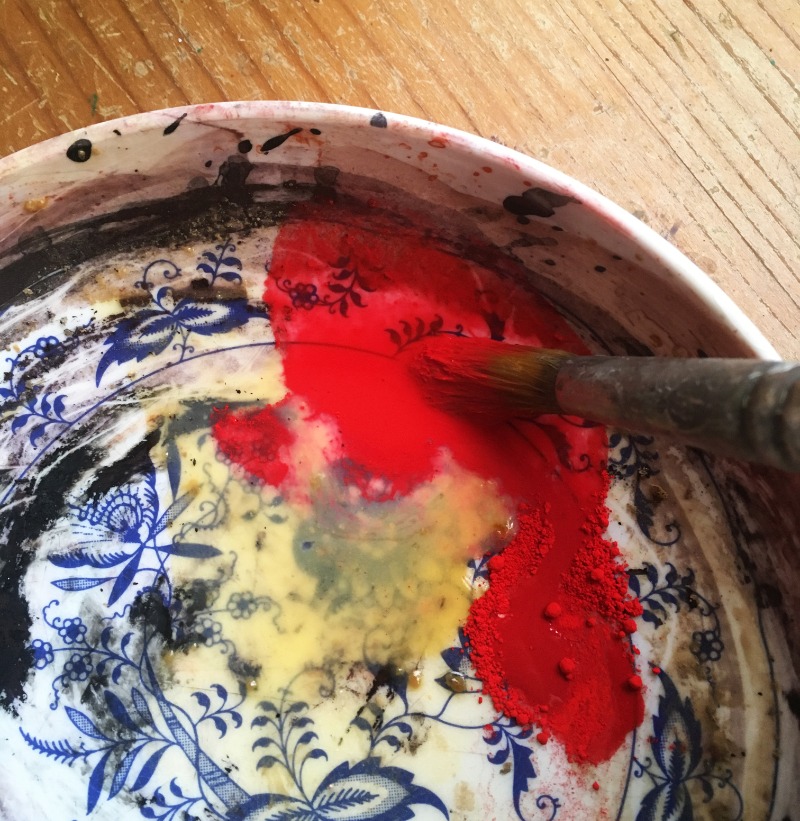

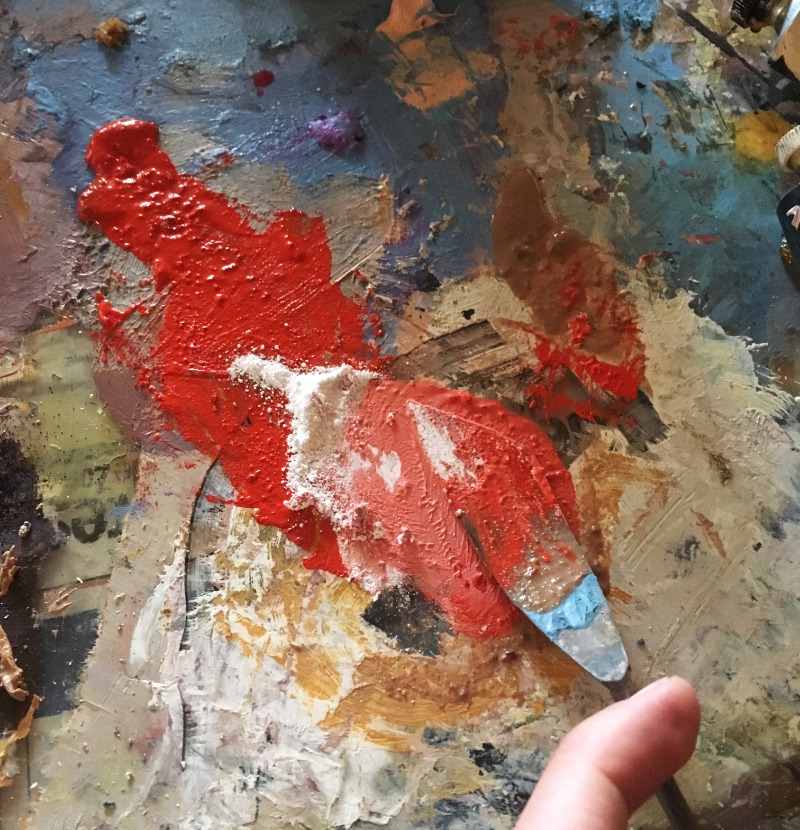


Which Pigment Brands Are Worth Buying?
The Sennelier brand name is synonymous with steep expense, but it’s also the finest quality and produces the best output.
Two teaspoons of Sennelier pigment can solidly cover about a square meter.
Not only are they commonly available in most platforms and retailers of the American and European markets, but their nuance range is breathtaking. 
Paying for them may be initially painful (check current prices on Amazon), but their performance is second to none other.
In the long run, it is absolutely worth the investment, especially if we are selling our pieces.
Time and coin permitting, you might also consider Clavé, a brand which I painted with years ago in Italy. In my opinion, these are the closest we can get today to most Renaissance pigments.
Don’t forget that the best and most expensive pigments, translucent or opaque, are lightfast, meaning their hue remains unaltered for a very long period of time (many human generations, as proven by tempera itself).
This is the main reason why some colored media are way more expensive than others. We’ll very likely find lightfast quality pigments from local or regional manufacturers if we dig into our closest art community (I purchase many of mine from a local factory).
Take into account that having a fine pigment is a great advantage for a professional painter, inasmuch it makes possible to use the exact same hue over different media, thus reducing production costs and granting a more precise control of our work.
Tempera Painting Techniques
While there are many ways to paint with tempera, two clearly distinct approaches enable the artist to manage light and color through it.

Glazing
The first one, with which it’s more commonly associated, is glazing, a light subtraction technique. This means that we take advantage of an immaculate solid white ground and progressively cover it with ever darker, yet translucent layers.
This was the prevalent technique of Renaissance Masters (fig. 16).

Direct Color
The second basic approach, curiously re-learned from oil, is direct color in which you intend each applied nuance to be a part of the final state (fig. 1, fig. 20). If we have mastered the principles of crosshatching and pointillism, we should definitely give glazing tempera a try.
Combining these two techniques with both glazing and direct color procedures in the same picture can produce the most marvelous results (fig. 14, fig. 15).
Demonstration Video
A quick and vivid look at tempera in action.
Auxiliary Uses of Tempera
Because of its solid matt finishing and lean binding, tempera makes an ideal underpainting. It is perfect to cover ample areas with either transparent or solid color.
It also makes an excellent cleansing medium for those brushes we regularly use for oil: just dip them into a finger of non-pigmented lean tempera, carefully remove the remaining color from the heads pressing a palette knife, and watch how much cleaner they come out from their soap bath.
What Surfaces Can We Use?
Overall, tempera performs at its best on rigid surfaces primed with handcrafted plaster. This is mandatory if you wish to achieve the extreme luminescence of Quattrocento painting.

If we wish to glaze, it is ideal to sand and polish our support until our panel feels just like a magazine.
While it is very likely that choosing fine walnut or poplar over lowly MDF will give our painting much better chances of outlasting mankind, we should consider the higher cost and weight.
On any flexible support, water tempera will inexorably crackle, but Damar and oily tempera pair nicely with a well-tightened canvas.
They do better on an oily plaster or casein priming, but they do adhere to acrylic gesso.
Cardboard and tempera make an excellent and very convenient pictorial sketching combo.
Being a wicked lover of cotton paper, I can’t but praise the pleasure it is to smear a rough textured surface with tempera.


Famous Egg Tempera Artists
Almost every masterpiece of Medieval and Renaissance painting not made with fresco was done with tempera.
This turns into a very long list of Great Masters in whose hands tempera thrived: Giotto, Andrei Rublev, Simone Martini, Beato Angelico, Piero Della Francesca, Ghirlandaio, Mantegna, Perugino.
It was by far the medium’s golden age.

The true comeback of tempera arrived with the 1900’s avant-garde.
Mariano Fortuny’s work is a brilliant highlight of modern tempera.

By the middle of the 20th Century, several artists had found in tempera an essential substance to portray the crisis of modernity, producing a number of masterpieces with it.
Diego Rivera, José Clemente Orozco, Marc Chagall, Pietro Annigoni, Andrew Wyeth, Frank Hinder, George Clair Tooker, among many others come to mind.
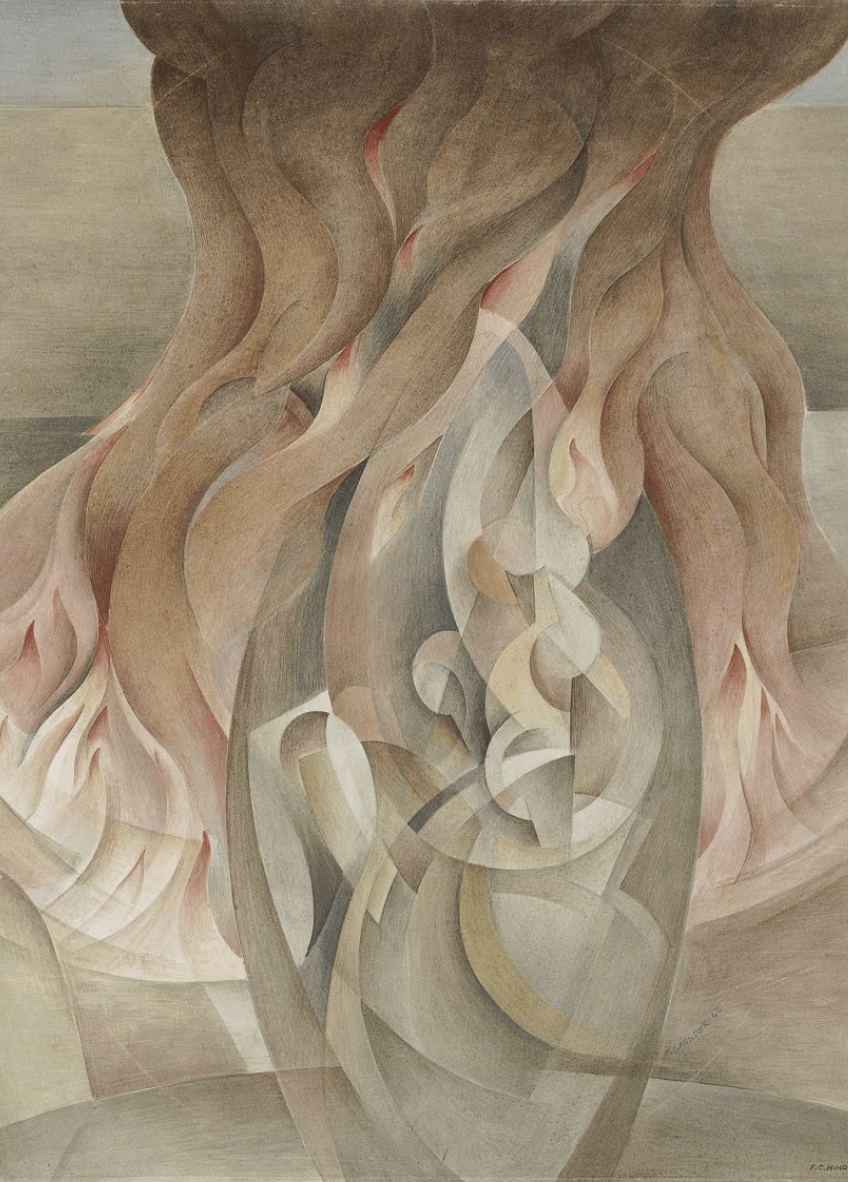
Contemporary Egg Tempera Painters
While there is much more awareness about tempera amongst painters today compared to the 19th Century, an artist who makes regular and sapient use of it is still a rare find.
Arturo Rivera
One of Mexico’s greatest living artists, Arturo Rivera has achieved international prestige, among other reasons, for his formidably pristine use of ancient media such as tempera.
A particularly brilliant highlight of his technique is the series El rastro del dolor (The Trace of Pain). You can visit his website here.
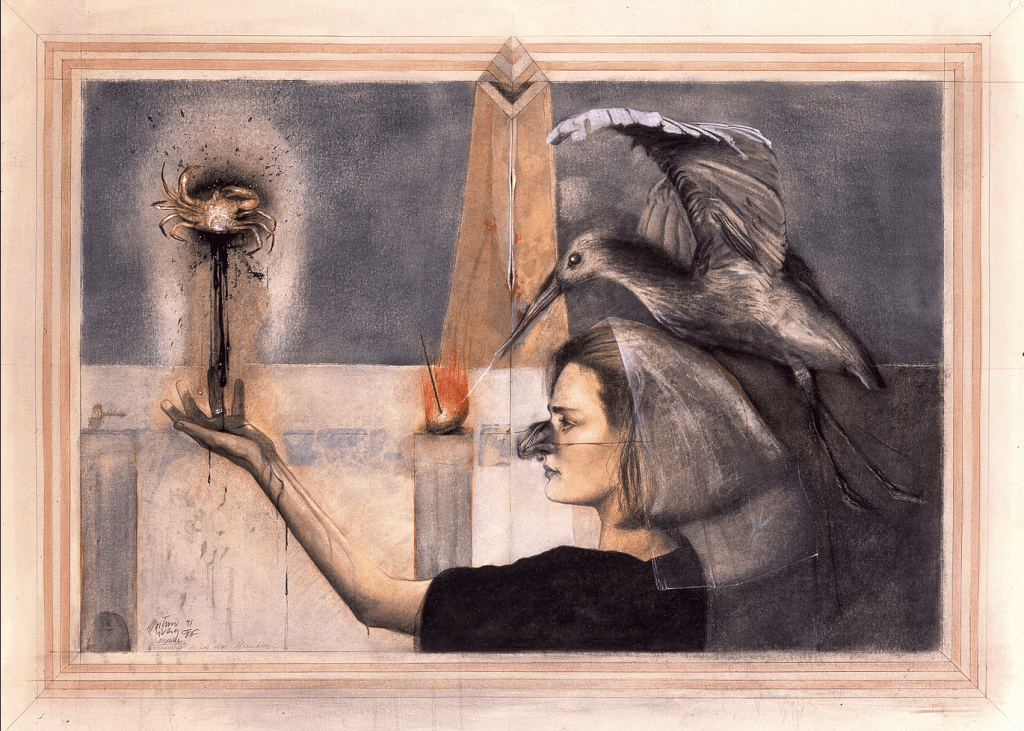
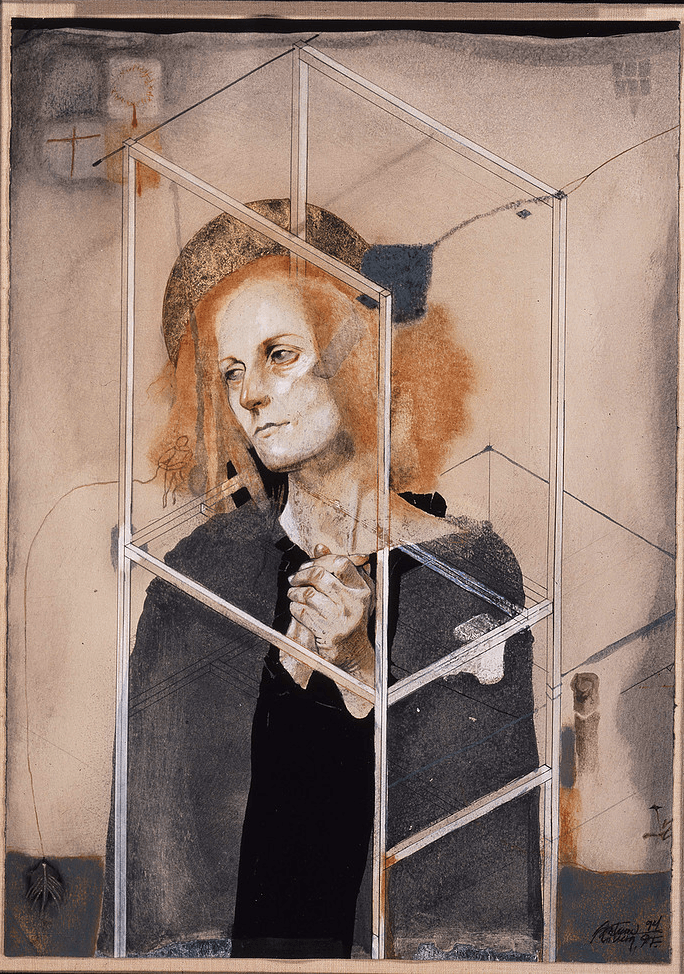
Control Terminus
Another brilliant artist who excels at mixing tempera with other media is Minsk resident Control Terminus. He is particularly fond of portrait where tempera allows him to give monumental physicality to his metaphysical figures and environments. You can look at his work here.
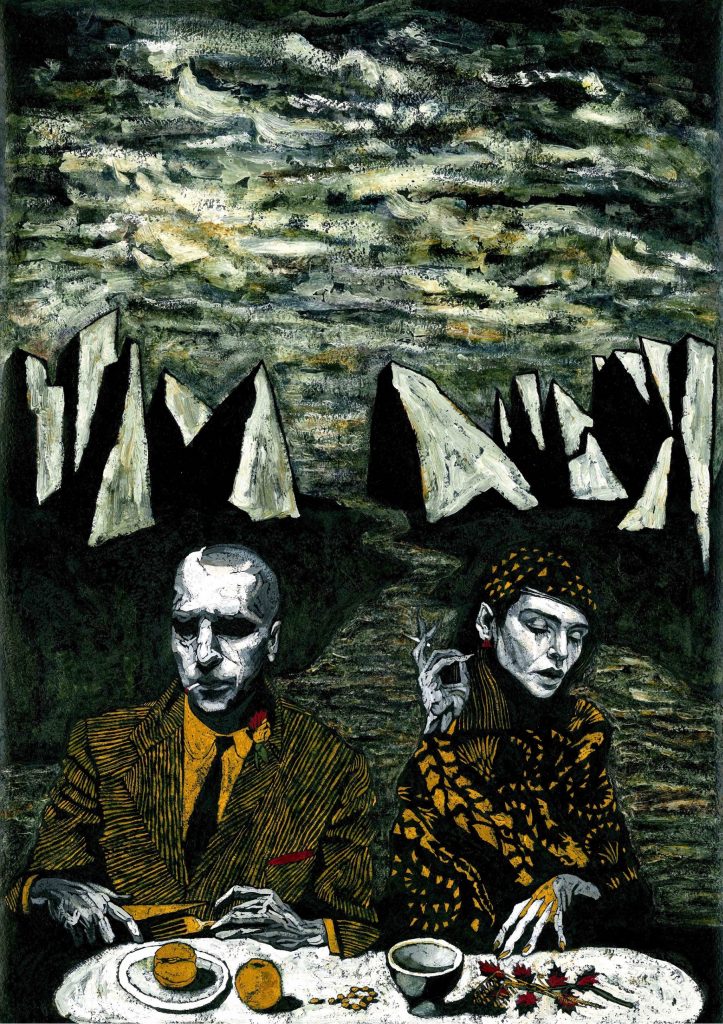

My Use of Egg Tempera
Once I finished art school, I returned to tempera because it was the only quality medium I could afford.
I was very lucky to count myself amongst Luis Nishizawa’s students: he really taught us how to prepare it properly.
I have stayed with tempera because I need a medium that can be both dense or very fluid and that can also allow a very quick execution.
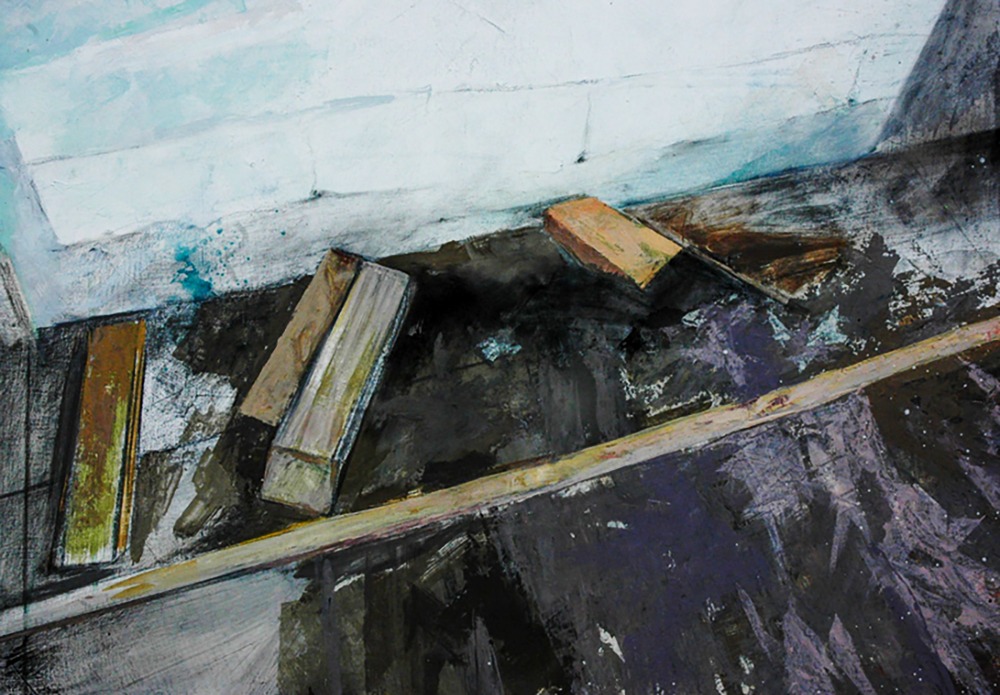
Tempera is like painting with a very thick pastel, which you can also turn into watercolor at will.
Acrylic is arguably the only medium which is even more versatile than tempera, yet, while I have made persistent use of it too, tempera permits much more thorough palette work and its vivacity rivals oil.
This is very important to me because I like to foster unpredictability when I paint.
Since I often use drawing and painting media together, the lean nature of the emulsion allows moving across different substances over the same piece of work.
In recent years I have been feeling increasingly ready to approach the techniques of the great masters and I have to thank tempera for it.

You can check out some more of my paintings using this medium at the following links:
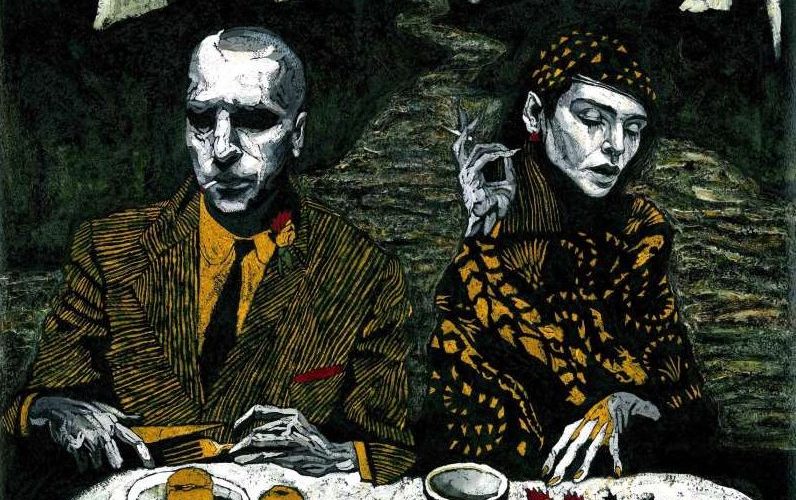

Dear Sir,
OUTSTANDING. I sent the link to this article to select friends. They will appreciate all that you have presented here.
Thank you.
Doug Johnson
hi i am looking a buying some egg tempera paintings how do i know they are authentic and have you ever heard of Roger Moore who is supposed to be the painter i can’t find any thing on this artist doing these portraits i would appreciate any advice or links to research this thanks vlad
I want to try tempera l. I did some experiments on paper and I was happy with the glossy finish and it can be combined with water color on top which gives a beautiful effect. This is such an inspiring article for beginners such as me. Working with tempera is more ecofriendly option too. I am completely switching from acrylic , started with water and now I want to play with mediums such as tempera for it’s inexpensive and much more satisfying result which would only be substituted with very expensive oil painting kit minus the solvents.
Thank you for your article. This writing piece showed that there is more to egg tempera than is naturally being discussed. Another great artist that a lot of modern artists forget or do not know about, is Peter Hurd. He is the brother-in-law of Andrew Wyeth. Because of this love for Southwest landscape, he is not as well known but exceptional. He is the one that inspired me to start working in this medium.
I TOO PAINT IN EGG TEMPERA , BUT HAVE A QUESTION I HAPE SOMEONE OUT THERE POSSIBLE CAN HELP ME ! CINNINO CENNINI LEFT OUT THE MOST SIGNIFICANT DETAILS IN HIS WRITING ON EGG TEMPERA PAINTING ! DOES ANYONE KNOW ?
Speaking of various artists, most of the ones mentioned are relatively well known.
The exception, although he’s become increasingly appreciated, is Pietro Annigoni, who was an absolute master of Tempera Grassa, which learned from the Russian painter Lokoff, which he tweaked and made his own.
Most of the incredible portraits Annigoni completed were done with this medium, however his technique and medium were naturally, and significantly different for his fresco work, mixed media, and plein air work.
Dear Vladimir,
I am an egg tempera artist and have been using this medium for the part forty years. Check out my work on my Instagram/Pinterest account; TinaBopiahArt
Can anyone please advise me about protecting a completed egg tempera image. After ‘curing’ for a few months to harden I’m not sure if it requires varnishing for extra protection. My work is all done with the glazing method, using only water and egg yolk for binder.